Last Updated on October 28, 2024 by Ellen
Last Updated on October 28, 2024 by Ellen
As budget slow travelers in early retirement with American passports, we are fortunate to have our pick of countries to visit. And as visitors in Malaysia, we found many positive things to love about this country.
Aside from Mexico, Malaysia is the only country we have returned to several times since we started our travel adventure in 2015. There are many reasons we keep going back to Malaysia, including the eight reasons I’ve put together for you below.
This list doesn’t include every reason to love Malaysia. And every country has its problems, Malaysia included.
We are personally not in the market to buy property because we prefer to keep traveling. But I understand why many retirees and slow travelers are discovering Malaysia is a hidden gem between more tourism-driven, vacation destination countries like Thailand and Indonesia.
So, let’s get to the list with specific examples.
8 Reasons to love Malaysia as an expat
1. Reasonable rent
We had a one-bedroom Airbnb rental for about $625 in Kuala Lumpur with an amazing skyline view, high speed internet, washing machine, and resort-style amenities in a trendy neighborhood (the full post on that awesome place is here).
In Malacca City, $25 a night covered a one-bedroom Airbnb apartment in a high-rise, with a view of the sea and hotel-like amenities within walking distance to the heart of that city.
On Penang Island, we spent about $35 a night for a high-rise Airbnb studio apartment in a hotel on a popular tourist beach a few miles outside George Town – the famous colonial city.
Also on Penang, we spent about $20 a night for a three-bedroom, two-bathroom Airbnb apartment with high speed internet and washing machine in a middle-class neighborhood away from the tourist zones with a jungle view.
Related: Monthly budget breakdown for Malaysia, 2022
On our second trip to Penang, we rented a three-bedroom, two-bathroom apartment near the popular Gurney Plaza for $600 a month. (We had great Airbnb hosts! Video tour and review is here).
Some expats in Malaysia sign year-long leases. One expat I met lives on the beach in a George Town suburb. His rent is the equivalent of only $530 a month, and it includes all utilities, a sea view, and parking. A comparable modern rental off the beach could cost a couple hundred dollars less.
Of course, our Airbnb rentals are higher-priced because we are short-term visitors. But there’s no question from what I’ve seen: comfortable, modern housing is seriously affordable for expats in Malaysia.
The views from some of our Airbnb rentals in Malaysia, from left to right: Gambier Heights, Penang; Tanjung Bungah, Penang; Kuala Lumpur; Malacca City.
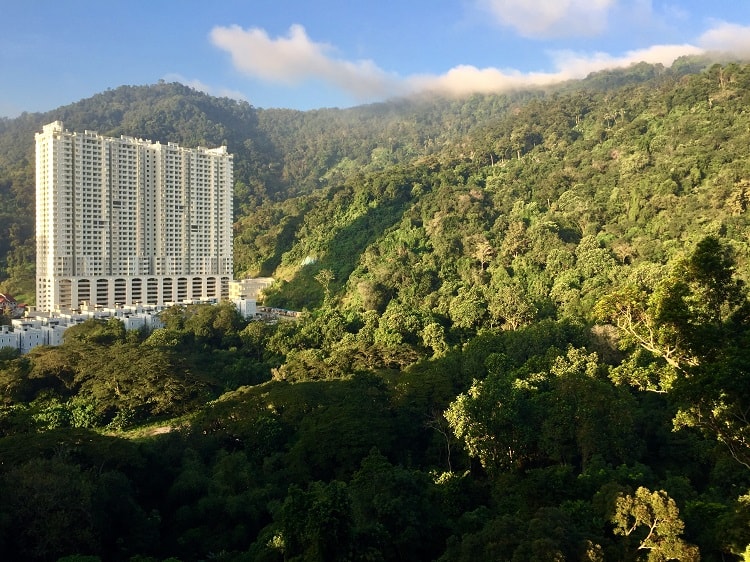
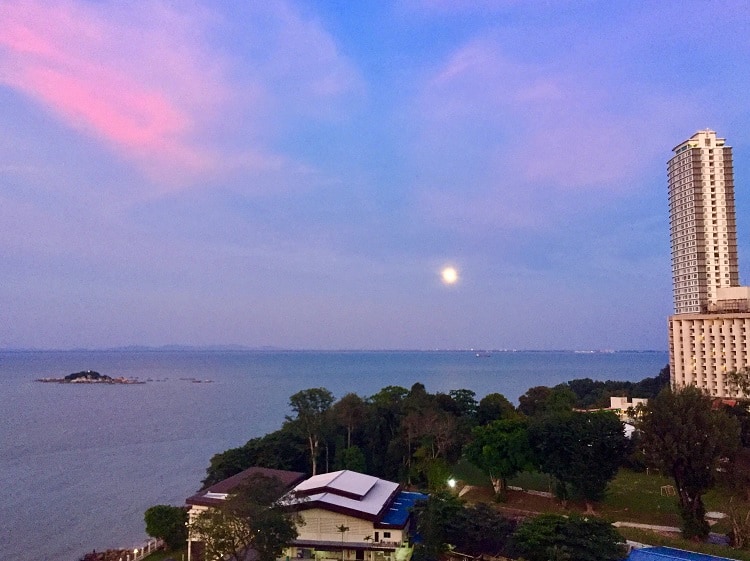
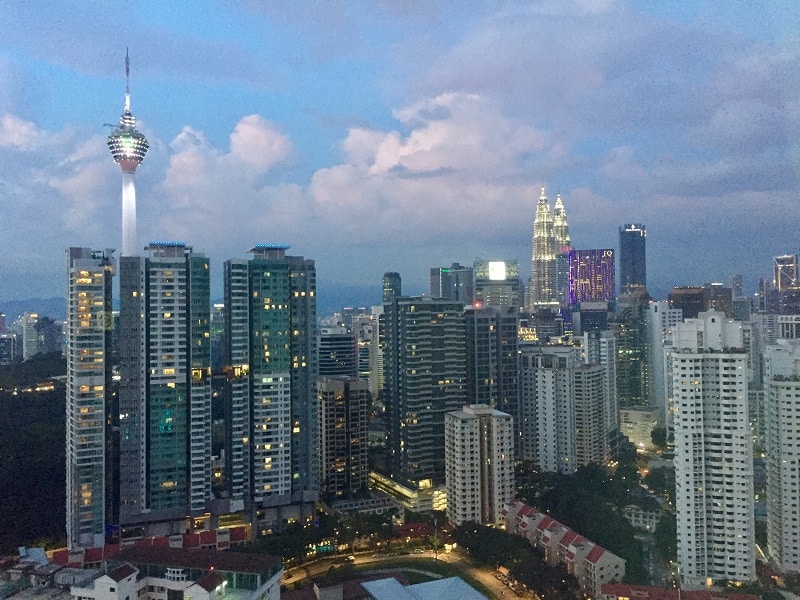
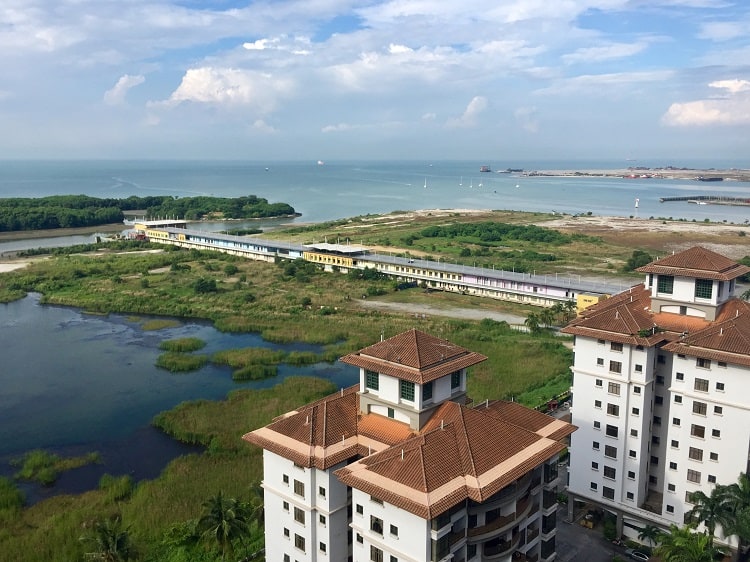
2. Reasonably priced food & beer
Grocery prices are reasonable in Malaysia. A liter of milk will cost about a dollar and you can find discount grocery stores for processed goods. Fruits and vegetables at local markets cost so little that you can buy a large bag stuffed with produce for a couple bucks. It’s probably nearly as cost effective to eat out than it is to cook at home, when you factor in the time to shop and cook.
A plate of food costs less than $2 at hawker stands. If you don’t know what a hawker stands are: these are semi-permanent fast food stands, almost like a parked food truck.
Tip: buy food from the busy stands, the ones with lots of customers.
A meal and non-alcoholic beverage in an average restaurant can easily be had for under $5. You can find more expensive restaurants that would still be considered reasonably priced when contrasted to U.S. or European prices.
By the way, wait staff don’t expect — and sometimes won’t accept — tips. (However, I like to leave a few ringgits under my plate.)
If there’s a downside on food and drink prices, for Tedly, it’s the relatively high cost of beer. In Mexico, $2 can buy three half-liter cans of beer. But in Malaysia, prices range from $2.25 to $3.50 for one half-liter can. The difference adds up over a month if you drink beer every day, which Tedly usually does. Good thing he’s not downing a six-pack daily.
Below: traditional mee goreng (fried noodles); simple chicken and rice; various roti (like a flat bread) with dipping sauces with teh tarik (sweet cold tea with milk); rojak (fruit, vegetable, and sometimes soy mix with peanut and prawn paste) and cendol (a cold, sweet desert, featured in a post here.)
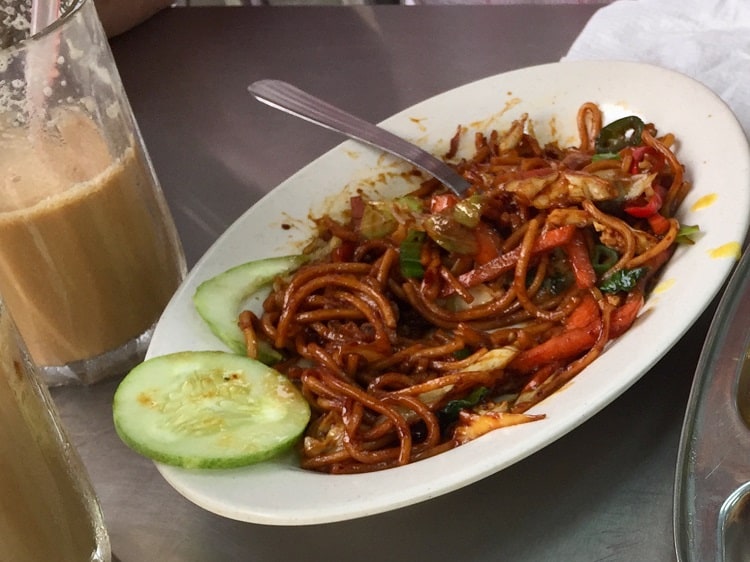
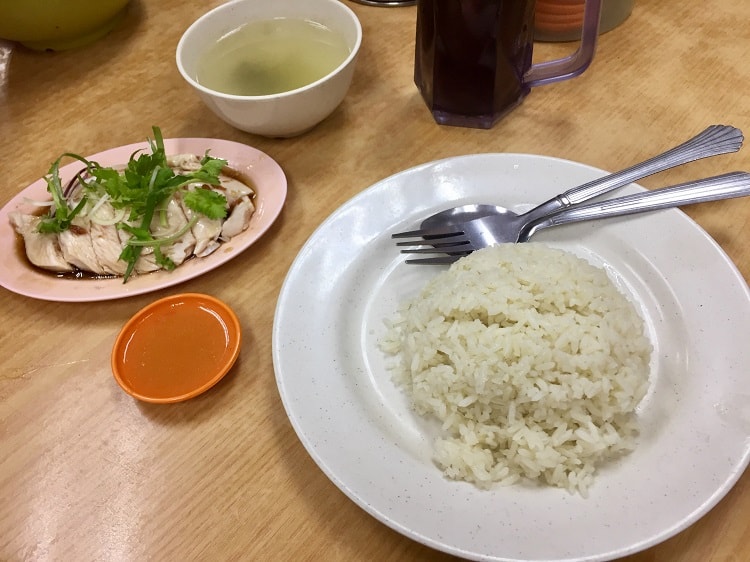
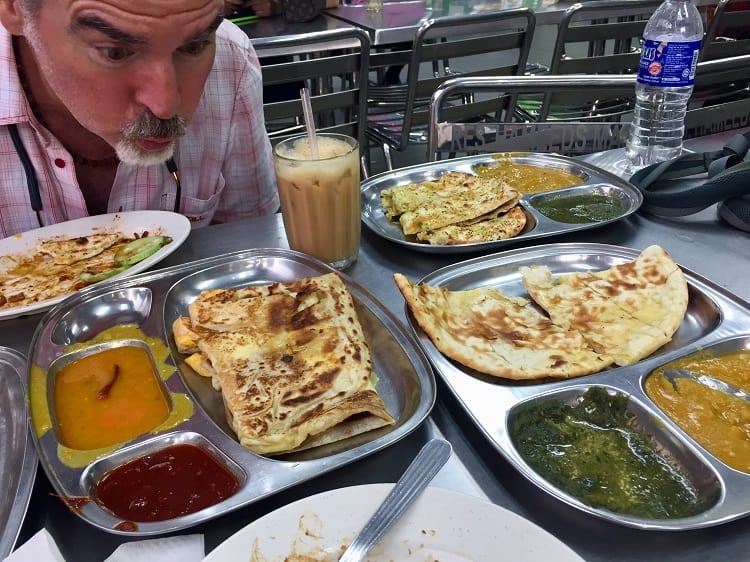
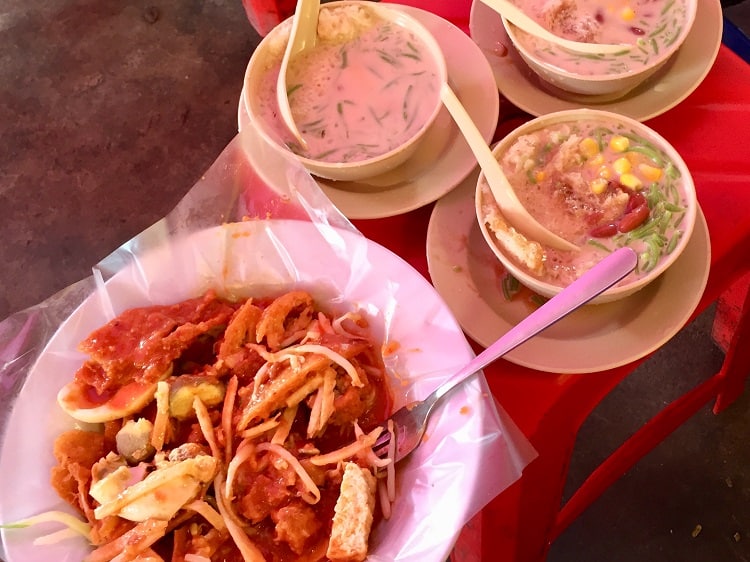
3. Transportation options
It’s super easy for expats in Malaysia to get around without a car. Grab is popular in many areas of the country – but not all. Grab is a car service similar to Uber. (Read more on Grab here.) A mile-long Grab ride in Kuala Lumpur will be $2, instead of $5 in a taxi.
In Penang, a 30-minute, 12.5-mile Grab ride from one end of the island to the other costs $5 or $6 during non-peak hours. Taxis would be more – but I don’t know how much more because I never tried it.
The “CAT” buses on Penang Island are free. On a regular Penang bus, a 45-minute ride from the center of George Town to suburban beaches cost less than fifty cents.
The trains in Kuala Lumpur cost less than a dollar to most destinations within the city. The “Go KL” buses are free.
Malacca was small enough that we simply walked everywhere.
Walking in the Cameron Highland villages is easy. If you need a taxi, the prices are not outrageous.
Regional transportation around Malaysia does not cost much, either. A four-hour bus ride from KL to Penang was about $10. From Singapore to Malacca City on a Malaysian bus line cost only $15. Both of those regional buses felt like luxury rides – with reclining seats and kick-ass air conditioning.
Below: monorail in the Bukit Bintang neighborhood of Kuala Lumpur; the ‘Sentral Station’ in Kuala Lumpur; a spacious regional bus; a typical train car on Kuala Lumpur’s commuter line for ‘women only’.
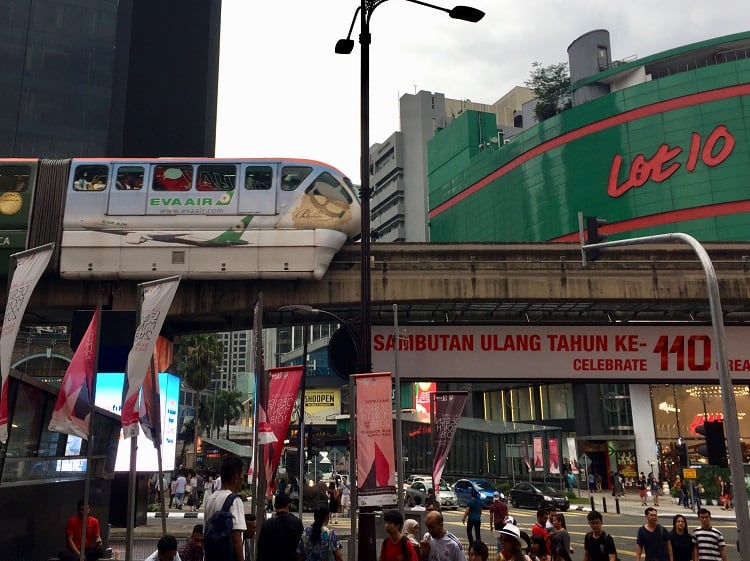
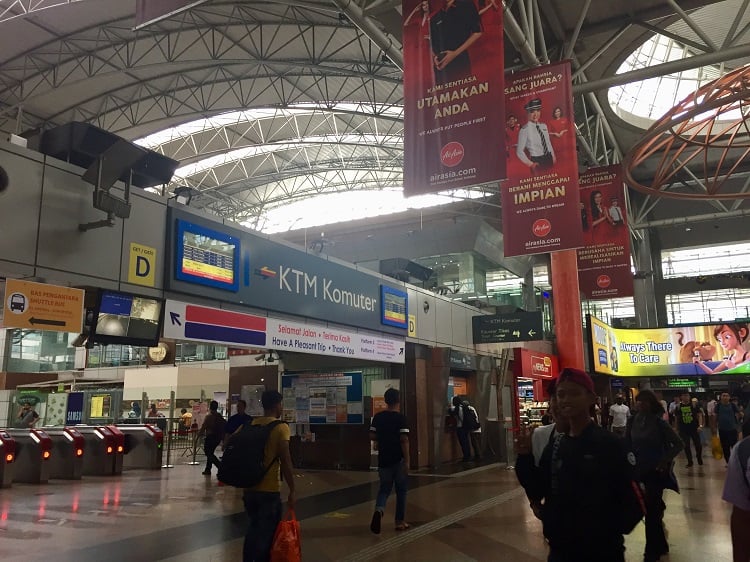
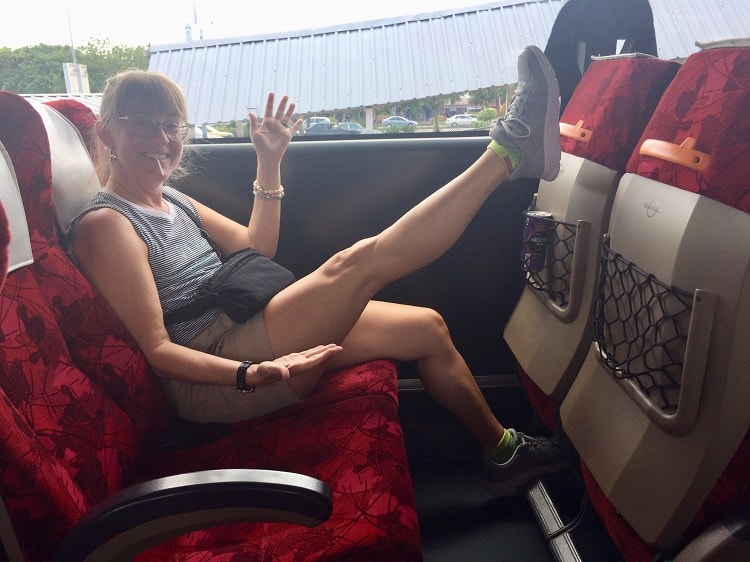
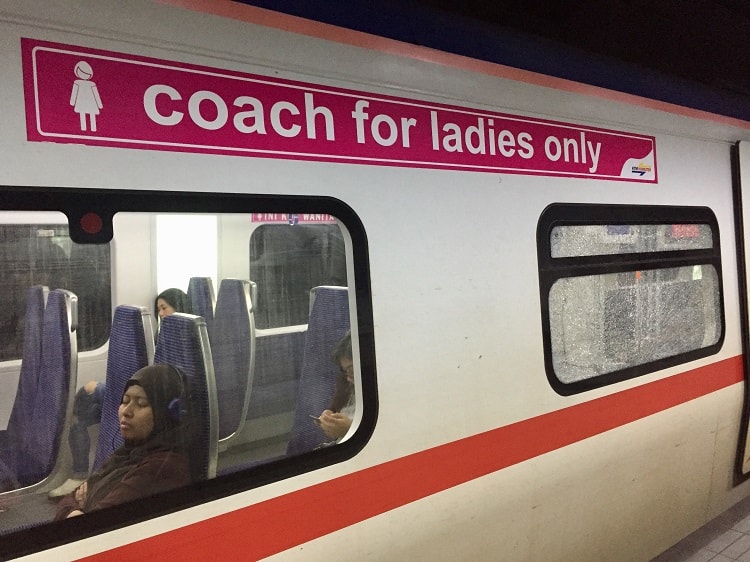
4. Quality health care for expats in Malaysia
Malaysia has a public/private health care system. Its citizens have access to free or nearly free health care. Malaysians also can go to private hospitals if they want to pay more.
Expats in Malaysia often use private hospitals and doctors. Some private hospitals market themselves to foreign tourists and have international help desks and welcome centers. I have used them.
Prices are low in contrast to America.
We saved hundreds of dollars on vaccinations. Read that post here. I had my post-breast cancer checkups at reasonable rates – find that post here. I give a specific price comparison here for the cost of a CT scan compared to back home.
There are countless dental options for expats in Malaysia. We had annual cleanings and checkups in George Town at KK Ong Dental Surgery. It came recommended by locals and expats. The doctors were talented and honest; the offices clean and modern; our appointments were made with short notice during the busy holiday season.
We’ve been to KK Ong’s office twice. To give you real-world price examples, on our first visit, I needed a cleaning and exam; Tedly needed a cleaning, exam, X-rays, and two fillings. Total cost for the both of us: $135. Try getting that price for all of that work in the U.S. with no insurance.
Read more about our second visit here – including why we think Malaysia is one of the best countries for expats to get dental work.
Reminder: we are in independent blog, and we get nothing in return for any praises sung.
Tedly, pictured below, is all pearly-white smiles after his dental work.
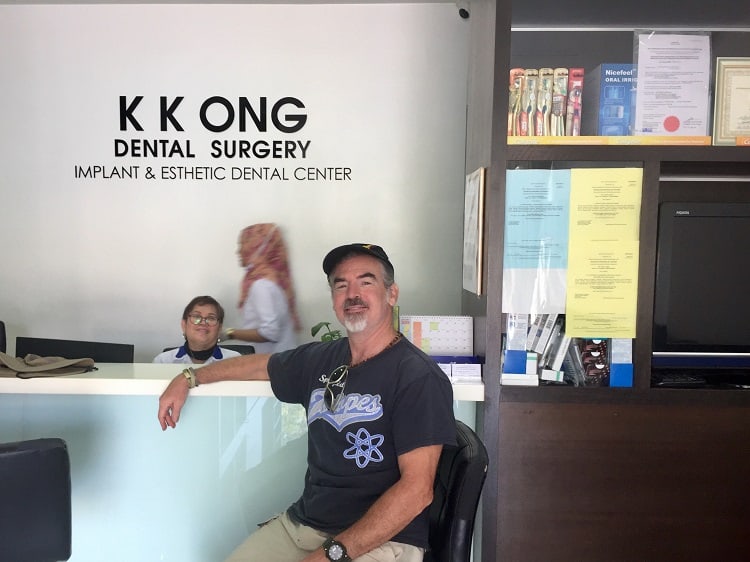
5. English, English, English
Doctors, dentists, and other professional service people all are usually fluent in English. That’s priceless. English is widely spoken by educated people, but even many less-educated people know a few basic words. This is supremely important to expats in Malaysia when seeking out medical care. (Trust me from experience on this one.)
If we need a doctor for anything serious, we’d likely return to Malaysia if we were on that side of the world. Nothing will get lost in translation. I cannot stress this importance enough. It’s critically important to me, as a breast cancer survivor.
People speaking English has other benefits, as well. We can easily communicate with just about everyone. This is a welcome change if you’ve been traveling off the beaten-path around other parts of Southeast Asia, like we did.
And, if we needed to buy another computer during our time in Southeast Asia, we’d get it in Malaysia because they sell English keyboards.
Side note on electronics prices: they are comparable, if not a tad less, than in America. Tedly bought a drone with extra batteries and a travel case for about the same price he would have spent back home. Read that post here.
6. Easy visas for Americans
American expats in Malaysia can enjoy a 90-day, free tourist visa, unlike some other Southeast Asian countries. For example, some countries require applications and photos, steep fees, and proof of onward travel.
By comparison, Malaysia was a breeze – a pleasant one, at that. We simply showed up at the border and were welcomed in.
Other visas require more work, of course. But for us slow travelers and retired budget travelers, this ease of entry is an incentive to return.
Related: What life is really like in Malaysia in early retirement (2022 post)
7. Diversity and tolerance
Malaysia has a wide mix of cultures and religions — all seemingly getting along without glaring issues. Muslims, Catholics, Protestants, Hindus, Buddhists, and whatever else; Chinese, Malay, Indian, Bangladeshis, Pakistanis, Europeans (especially Brits and Scots), and whatever else.
Expats in Malaysia can expect to see a melting pot of culture on the same street. For example, you might see Hindus lighting incense in front of a storefront, and a few feet away Taoists are burning something in the street, while down the road Catholic church bells ring, and around the block the Muslim prayer call is on the loudspeaker. It’s actually a wonderful experience!
Malaysia is also diverse in its terrain. We’ve driven by rural areas and farms on bus rides to and from cities.
The capital feels cosmopolitan, and yet Malaysian beaches are laid back and jungles balance modern landscapes with some greenery.
8. Safety
Gun laws and drug laws are strong in Malaysia and punishments for breaking laws are strict. This has an overall effect on safety around the country.
Take two cities – Cleveland, Ohio (Tedly’s hometown), and George Town, Penang. The safety difference is striking. I’m more likely to be a crime victim in Cleveland than in George Town. Check the stats for yourself here.
Tedly and I split up for individual explorations some days. I never felt unsafe or threatened or worried. Of course, street smarts and common sense rule the scene – wherever you are in the world.
Is there anything I didn’t love? Yes.
- Malaysia is damn hot.
- I was stung by jellyfish in the sea near George Town and had sore, burning legs for days. There is a deadly species new to this area (since 2017, 2018) I never saw what type stung me, because:
- The sea water appears dirty. It’s so cloudy you can’t see one foot in front of your face underwater. (Thus, the unknown jellyfish attack.)
- Kuala Lumpur traffic is a nightmare. (Although there are worse places on the planet… India comes to mind…)
Not to end on a Debbie Downer note, because I’d definitely go back to Malaysia a fourth time!
Between our three trips to Malaysia so far, we’ve spent about nine months total in the country, and we look forward to visiting again in the future.
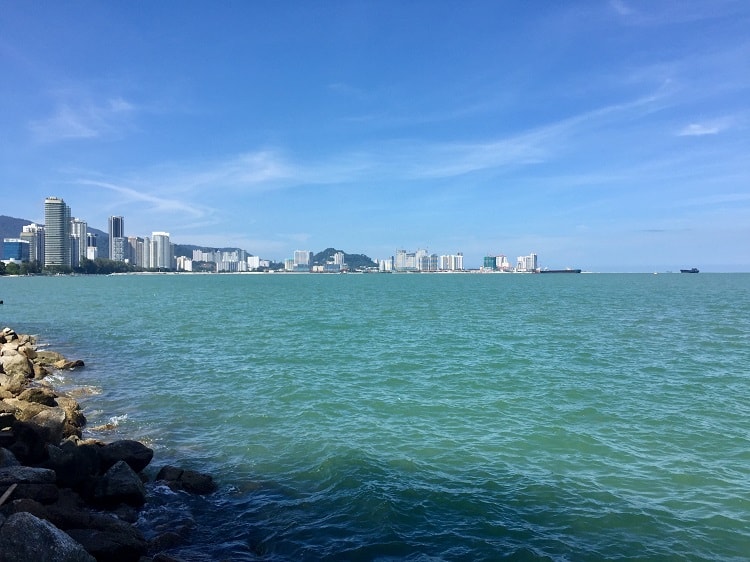
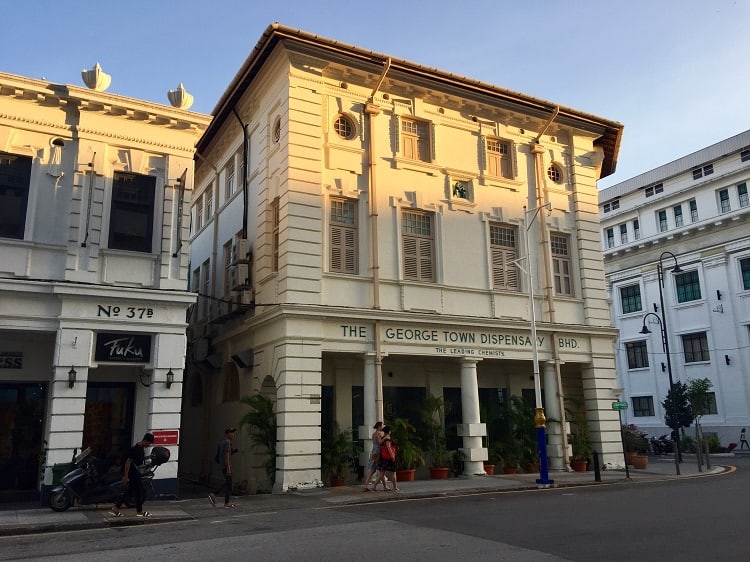
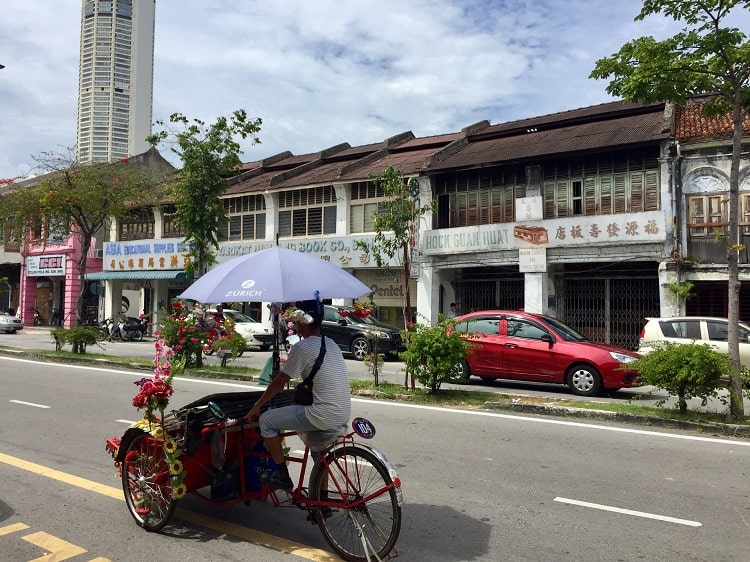
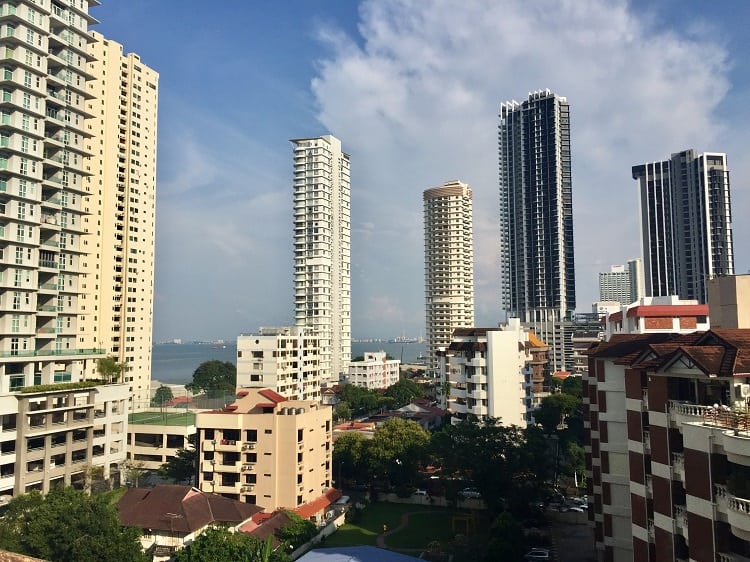
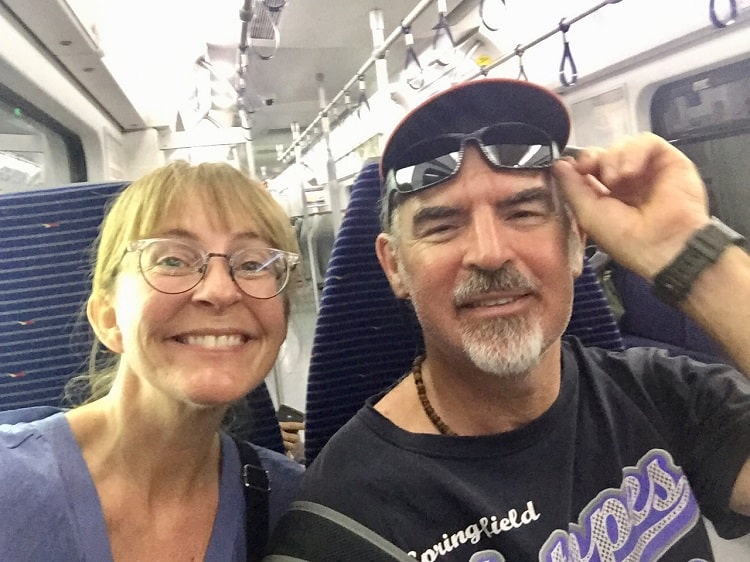
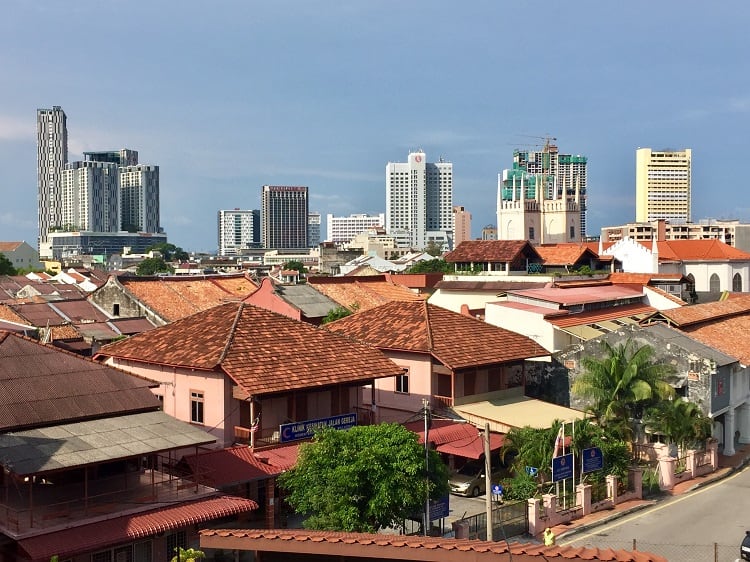

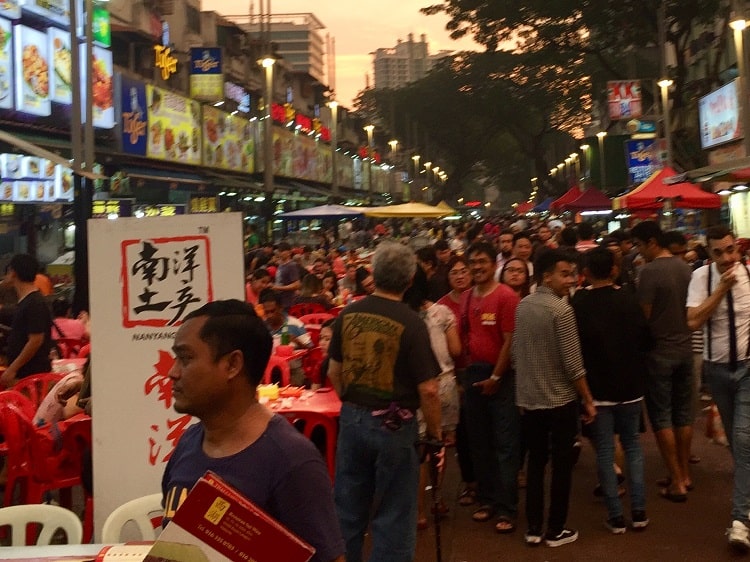
Sorry about your stings… glad you’re ok… ?